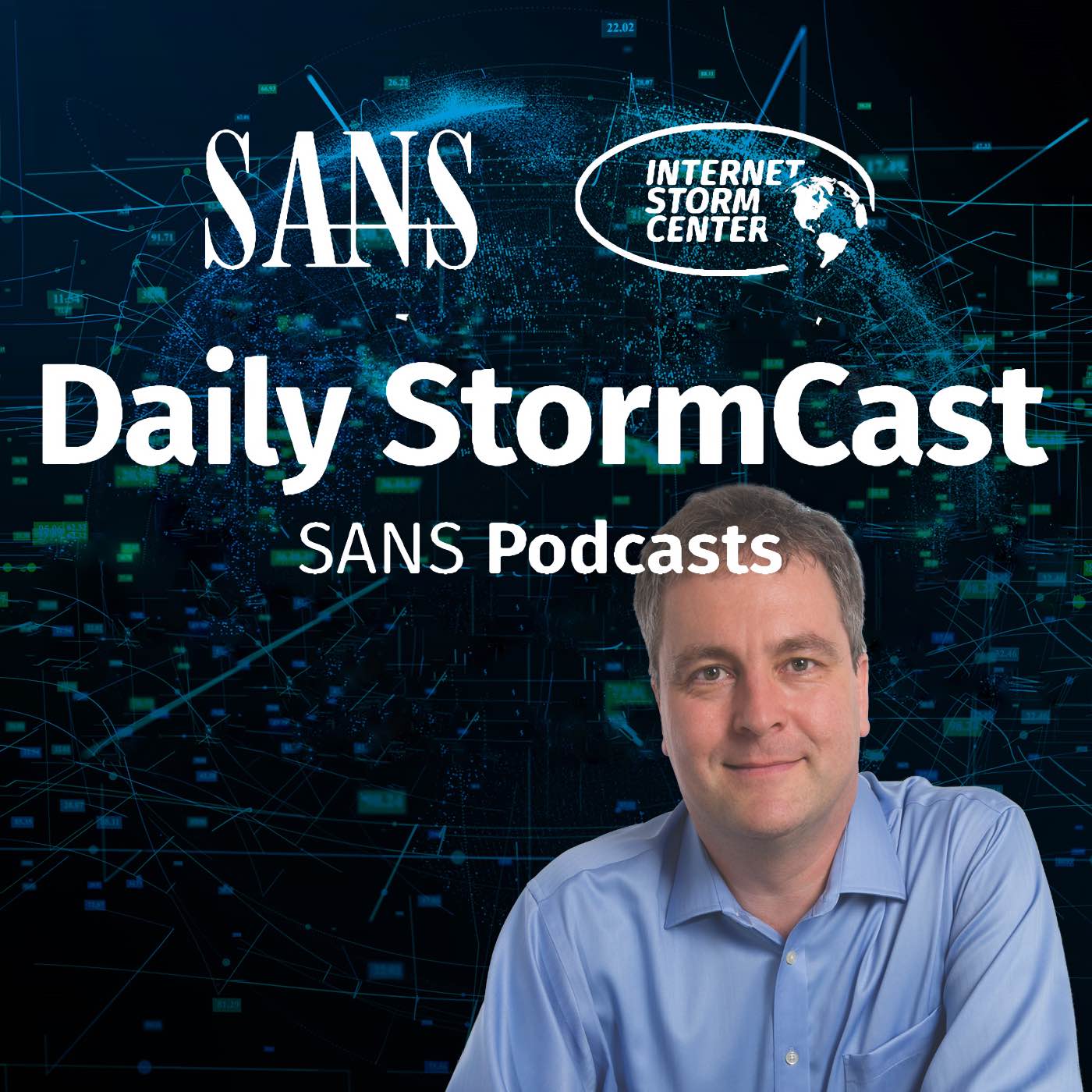Handler on Duty: Guy Bruneau
Threat Level: green
Podcast Detail
SANS Stormcast Thursday, November 6th, 2025: Domain API Update; Teams Spoofing; VShell Report
If you are not able to play the podcast using the player below: Use this direct link to the audio file: https://traffic.libsyn.com/securitypodcast/9688.mp3
My Next Class
| Application Security: Securing Web Apps, APIs, and Microservices | Dallas | Dec 1st - Dec 6th 2025 |
| Network Monitoring and Threat Detection In-Depth | Online | Central European Time | Dec 15th - Dec 20th 2025 |
Updates to Domainname API
Some updates to our domainname API will make it more flexible and make it easier and faster to get the complete dataset.
https://isc.sans.edu/diary/Updates%20to%20Domainname%20API/32452
Microsoft Teams Impersonation and Spoofing Vulnerabilities
Checkpoint released details about recently patched spoofing and impersonation vulnerabilities in Microsoft Teams
https://research.checkpoint.com/2025/microsoft-teams-impersonation-and-spoofing-vulnerabilities-exposed/
NViso Report: VSHELL
NViso published an amazingly detailed report describing the remote control implant VSHELL. The report includes details about the inner workings of the tool as well as detection ideas.
https://www.nviso.eu/blog/nviso-analyzes-vshell-post-exploitation-tool
| Application Security: Securing Web Apps, APIs, and Microservices | Dallas | Dec 1st - Dec 6th 2025 |
| Network Monitoring and Threat Detection In-Depth | Online | Central European Time | Dec 15th - Dec 20th 2025 |
| Application Security: Securing Web Apps, APIs, and Microservices | Orlando | Mar 29th - Apr 3rd 2026 |
| Network Monitoring and Threat Detection In-Depth | Amsterdam | Apr 20th - Apr 25th 2026 |
| Application Security: Securing Web Apps, APIs, and Microservices | San Diego | May 11th - May 16th 2026 |
| Network Monitoring and Threat Detection In-Depth | Online | Arabian Standard Time | Jun 20th - Jun 25th 2026 |
| Network Monitoring and Threat Detection In-Depth | Riyadh | Jun 20th - Jun 25th 2026 |
Podcast Transcript
Hello and welcome to the Thursday, November 6, 2025 edition of the SANS Internet Storm Center's Stormcast. My name is Johannes Ullrich, recording today from Jacksonville, Florida. And this episode is brought to you by the SANS.edu Undergraduate Certificate Program in Cybersecurity Fundamentals. Today I made live some changes to our new domain API, this is an API that basically delivers newly registered domains for the last day. This particular API had a problem that has been going on for a while where it often, pretty much always, only returned a partial result. So basically the results were cut off. Well, fix that two different ways. First of all, if you just want all the domains, all the domain names, then the easiest solution is just download a static file that I'm offering now. That file is being updated once an hour and should download really quickly because, well, it's just static. It doesn't have to be created on the fly. Also with that, it doesn't run into the problems where you only get a partial result back. The second option is if you still want to use the API, you now have pagination where you can just download a part of the results. You can also do some filtering for keywords if you don't really want the entire list. But really the easiest way is just download a static file and then do whatever filtering you need or so at your end. That probably will be the simplest, fastest solution for this. This list also includes our sort of still experimental scoring system where we sort of try to assign anomaly scores to the domains. If you have any feedback on that, please let me know. And Checkpoint published an interesting blog post showing some vulnerabilities that Microsoft recently patched in its Teams platform. One of the ways Teams, of course, is often used is for communication internal to a company. And with that, users tend to have quite a bit of trust in the platform, unlike with email, that the sender is actually the person that is indicated as part of the platform. Well, apparently that wasn't always the case. The fundamental problem here appears to be that each user in Teams has a unique user ID and that user ID is validated and you cannot basically spoof a different user ID. But that user ID is really just about one of those UUIDs or a random string and it's not visible to the recipient. Instead, there is a display name that's assigned to a particular user that is then being displayed to the recipient. And that display name, well, can be altered by the user sending the message. The other interesting and probably not quite as severe problem was that it was possible to modify a message. So the edit flag would not be visible. That, of course, could then be used to, for example, fake a message first to a user or send a message to a user, then later edit it. And the user can't really prove that you said something else earlier. I'm not sure what kind of internal logs are available there, but probably not too many, given that most of this happens in Microsoft's cloud platform. So I think this comes down to sort of a little bit of awareness item here to be careful even in these internal platforms whether or not a message is legit. And I think there should always be a little bit of a sanity check if a message arrives that's out of character for the sending person. Then probably be suspicious and maybe try to verify the identity of the sender beyond what you're seeing on the screen. There are typically many things like lookalike characters and such that can be used to impersonate other users that don't necessarily require an outright vulnerability in the platform. And we do have an amazingly thorough report about VSHELL from Belgium security company Nviso. Nviso collected pretty much anything that's available there about VSHELL. I can't even summarize it here. As part of the podcast, this report is 40 pages of details what VSHELL exactly does, how it works, how to detect it, which is always something that I'm really interested in. They found something like 1500 different VSHELL servers. VSHELL is one of those implants that attackers are leaving on infected systems to then gain remote control over these systems. It's more used by the more sophisticated attackers. It used to be publicly available and open source essentially, but in recent years it has become closed source and well, of course, as a result also a little bit more difficult than to analyze what it exactly does and how it works. So great paper here for any incident responders or such that really want to dive into this if you run into VSHELL as part of an incident. Well, and that's it for today. Thanks again for listening. Thanks for liking. Thanks for subscribing. Thanks for leaving good comments on your favorite podcast platform. That's it for today and talk to you again tomorrow. Bye.











